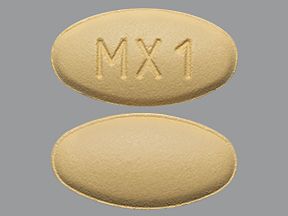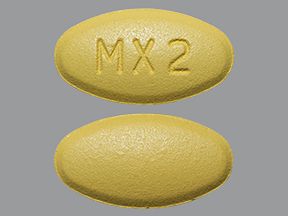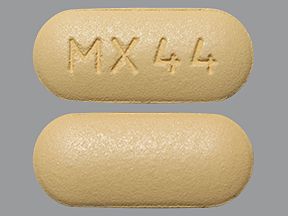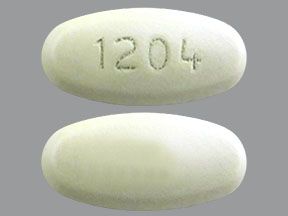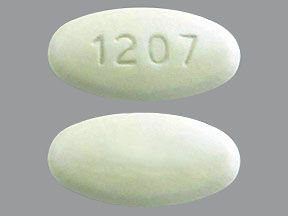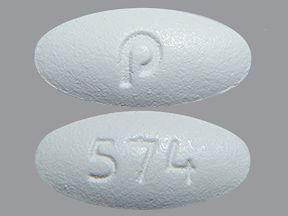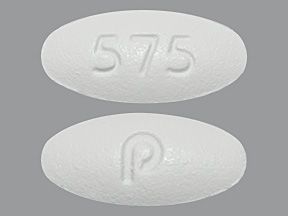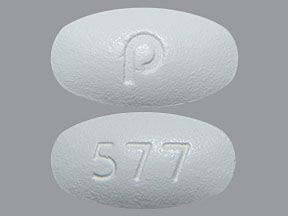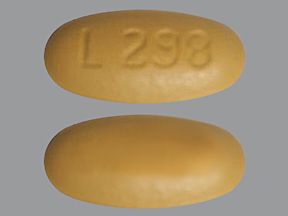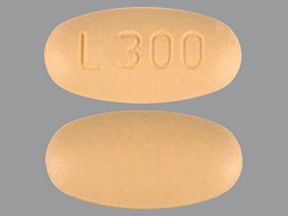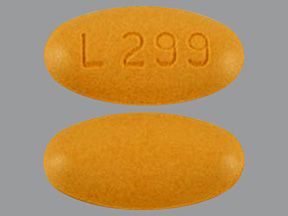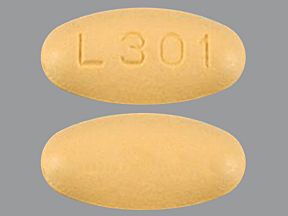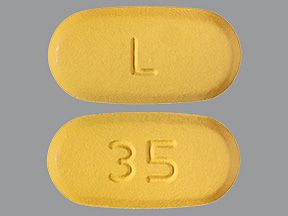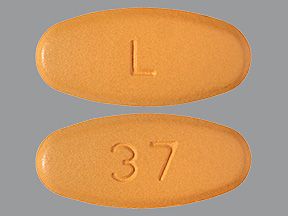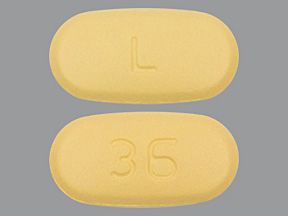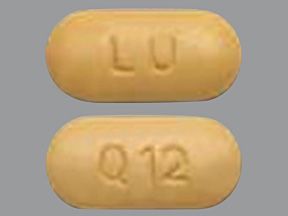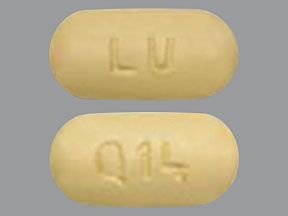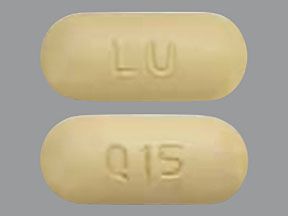- Amlodipine/valsartan oral tablet is available as a brand-name drug and a generic drug. Brand name: Exforge.
- Amlodipine/valsartan comes only in the form of a tablet you take by mouth once each day.
- Amlodipine/valsartan is used to treat hypertension (high blood pressure).
FDA warning: Pregnancy risks
- This drug has a black box warning. This is the most serious warning from the Food and Drug Administration (FDA). A black box warning alerts doctors and patients about drug effects that may be dangerous.
- Don’t take amlodipine/valsartan if you’re pregnant. If you’re taking this drug and find out that you are pregnant, stop taking it right away and talk to your doctor. This medication can serious problems, and can even end your pregnancy.
Other warnings
- Low blood pressure warning: This medication can cause low blood pressure. Low blood pressure is more likely to occur if you take diuretics (water pills), are on a low-salt diet, or get dialysis treatments. It’s also more likely if you have heart problems, consume drinks that contain alcohol, or get sick with vomiting or diarrhea.
- Chest pain and heart attack warning: Chest pain and heart attack can occur when you start to take amlodipine, or when your doctor increases your dosage. Amlodipine is one of the drugs in this combination product. If you develop sudden or worsening chest pain after starting this drug or increasing your dosage, call 911 or go to the nearest emergency room right away.
Amlodipine/valsartan is a prescription drug. It comes as a tablet that you take by mouth once each day.
Amlodipine/valsartan is a combination of two drugs in a single form. It’s important to know about all the drugs in the combination because each drug may affect you in a different way.
Amlodipine/valsartan is available as a brand-name drug called Exforge. It’s also available as a generic drug. Generic drugs usually cost less than the brand-name version. In some cases, they may not be available in every strength or form as the brand-name drug.
Why it’s used
Amlodipine/valsartan is used to treat high blood pressure.
How it works
Amlodipine belongs to a class of drugs called calcium channel blockers. Valsartan belongs to a class of drugs called angiotensin II receptor blockers. A class of drugs is a group of medications that work in a similar way. These drugs are often used to treat similar conditions.
Amlodipine and valsartan work in different ways to relax your blood vessels, which helps to lower your blood pressure. Amlodipine works by relaxing the muscles that tighten and narrow blood vessels. Valsartan works by blocking the action of angiotensin II, a chemical in your body that causes blood vessels to tighten and narrow. This helps to relax and widen your blood vessels.
Amlodipine/valsartan oral tablet may cause drowsiness, and it can also cause other side effects.
More common side effects
The more common side effects that can occur with use of amlodipine/valsartan include:
- dizziness
- swelling of your hands, ankles, or feet
- congestion in your nose
- sore throat
- head or chest cold
If these effects are mild, they may go away within a few days or a couple of weeks. If they’re more severe or don’t go away, talk to your doctor or pharmacist.
Serious side effects
Call your doctor right away if you have serious side effects. Call 911 if your symptoms feel life-threatening or if you think you’re having a medical emergency. Serious side effects and their symptoms can include the following:
- Low blood pressure. Symptoms can include:
- dizziness or feeling faint
- chest pain
- Kidney problems. Symptoms can include:
- swelling of your hands, ankles, or feet
- unexplained weight gain
- Heart attack. Symptoms can include:
- chest pain or tightness
- shortness of breath
- rapid heartbeat
- discomfort in your upper body
Disclaimer: Our goal is to provide you with the most relevant and current information. However, because drugs affect each person differently, we cannot guarantee that this information includes all possible side effects. This information is not a substitute for medical advice. Always discuss possible side effects with a healthcare provider who knows your medical history.
Amlodipine/valsartan oral tablet can interact with other medications, vitamins, or herbs you may be taking. An interaction is when a substance changes the way a drug works. This can be harmful or prevent the drug from working well.
To help avoid interactions, your doctor should manage all of your medications carefully. Be sure to tell your doctor about all medications, vitamins, or herbs you’re taking. To find out how this drug might interact with something else you’re taking, talk to your doctor or pharmacist.
Examples of drugs that can cause interactions with amlodipine/valsartan are listed below.
Cholesterol drug
Simvastatin is used to help manage cholesterol levels. Taking this drug with amlodipine, one of the drugs in this combination product, can greatly raise the amount of simvastatin in your body. This can lead to serious side effects, including liver damage, kidney failure, and muscle pain and weakness.
Heart drugs
Using certain heart drugs with amlodipine/valsartan raises your risk of very low blood pressure and increased potassium levels. It can also harm your kidneys. Examples of these drugs include:
- angiotensin receptor blockers (ARBs), such as:
- losartan
- olmesartan
- telmisartan
- angiotensin-converting enzyme (ACE) inhibitors, such as:
- enalapril
- lisinopril
- captopril
Mood stabilizer
Lithium is used to treat certain mood disorders. Taking lithium with amlodipine/valsartan can increase the level of lithium in your body. This raises your risk of side effects from lithium. These can include vomiting, seizures, or coma.
Pain drugs
In people who are older or have kidney problems, the use of this medication along with NSAIDs (nonsteroidal anti-inflammatory drugs) can cause serious kidney damage. Examples of NSAIDs include:
- ibuprofen
- naproxen
Diuretics (water pills)
Amlodipine/valsartan can cause low blood pressure. Your risk of low blood pressure is increased if you also take diuretics. Symptoms of low blood pressure can include dizziness or feeling faint, or chest pain. Examples of diuretics include:
- hydrochlorothiazide
- furosemide
Transplant drugs
Immunosuppressant drugs can be used to prevent the rejection of an organ transplant. When these drugs are used with amlodipine, the levels of these drugs in your body can be increased. This raises your risk of side effects. If you take one of these drugs, your doctor will monitor you closely and adjust your dosage if needed.
These immunosuppressant drugs include:
- cyclosporine
- tacrolimus
Disclaimer: Our goal is to provide you with the most relevant and current information. However, because drugs interact differently in each person, we cannot guarantee that this information includes all possible interactions. This information is not a substitute for medical advice. Always speak with your healthcare provider about possible interactions with all prescription drugs, vitamins, herbs and supplements, and over-the-counter drugs that you are taking.
This drug comes with several warnings.
Allergy warning
Amlodipine/valsartan can cause a severe allergic reaction. Symptoms can include:
- trouble breathing
- swelling of your throat or tongue
If you develop these symptoms, call 911 or go to the nearest emergency room.
Don’t take this drug again if you’ve ever had an allergic reaction to it. Taking it again could be fatal (cause death).
Food interaction warning
Amlodipine/valsartan can cause low blood pressure. Your risk of low blood pressure is increased if you’re on a low-salt diet. Symptoms of low blood pressure can include dizziness or feeling faint, or chest pain.
Alcohol interaction warning
Avoid or limit alcohol intake while taking amlodipine/valsartan. This drug can cause low blood pressure. Your risk of low blood pressure is increased if you have drinks that contain alcohol. Symptoms of low blood pressure can include dizziness or feeling faint, or chest pain.
Warnings for people with certain health conditions
For people with heart problems: This medication can cause low blood pressure. Your risk of lower blood pressure is increased if you have certain heart problems, such as congestive heart failure.
For people with kidney problems: This medication can worsen kidney disease. Symptoms of worsening kidney disease include swelling in your hands, feet, or ankles, or unexplained weight gain.
For people on kidney dialysis: This medication can cause low blood pressure. Your risk of lower blood pressure is increased if you’re on dialysis.
Warnings for other groups
For pregnant women: Amlodipine/valsartan is a category D pregnancy drug. That means two things:
- Research in humans has shown adverse effects to the fetus when the mother takes the drug.
- This drug should only be used during pregnancy in serious cases where it’s needed to treat a dangerous condition in the mother.
Talk to your doctor if you’re pregnant or planning to become pregnant. Taking this drug during pregnancy can harm or even end your pregnancy.
If you become pregnant while taking amlodipine/valsartan, stop taking it right away and call your doctor.
For women who are breastfeeding: This drug may pass into breast milk and cause side effects in a child who is breastfed. Talk to your doctor about whether you should stop breastfeeding or stop taking this medication.
For seniors: The kidneys of older adults may not work as well as they used to. This can cause your body to process drugs more slowly. As a result, a higher amount of a drug stays in your body for a longer time. This raises your risk of side effects.
All possible dosages and drug forms may not be included here. Your dosage, drug form, and how often you take the drug will depend on:
- your age
- the condition being treated
- how severe your condition is
- other medical conditions you have
- how you react to the first dose
Dosage for hypertension
Generic: Amlodipine/valsartan
- Form: oral tablet
- Strengths:
- 5 mg amlodipine/160 mg valsartan
- 10 mg amlodipine/160 mg valsartan
- 5 mg amlodipine/320 mg valsartan
- 10 mg amlodipine/320 mg valsartan
Brand: Exforge
- Form: oral tablet
- Strengths:
- 5 mg amlodipine/160 mg valsartan
- 10 mg amlodipine/160 mg valsartan
- 5 mg amlodipine/320 mg valsartan
- 10 mg amlodipine/320 mg valsartan
Adult dosage (ages 18 years and older)
- Your doctor may start you on a dosage of 5 mg amlodipine/160 mg valsartan once daily.
- If your blood pressure is not controlled after 1–2 weeks, your doctor may increase your dosage.
- The maximum dosage is 10 mg amlodipine/320 mg valsartan once daily.
Child dosage (ages 0–17 years)
This medication has not been studied in children. It should not be used in people younger than 18 years.
Senior dosage (ages 65 years and older)
The kidneys of older adults may not work as well as they used to. This can cause your body to process drugs more slowly. As a result, a higher amount of a drug stays in your body for a longer time. This raises your risk of side effects.
Your doctor may start you on a lowered dosage or a different dosing schedule. This can help keep levels of this drug from building up too much in your body.
Special dosage considerations
For people with kidney disease: This medication can cause high levels of a mineral called potassium in your body. If you have kidney problems, your risk of having high potassium levels is increased. To help prevent this, your doctor may prescribe a lower dosage of this medication.
Disclaimer: Our goal is to provide you with the most relevant and current information. However, because drugs affect each person differently, we cannot guarantee that this list includes all possible dosages. This information is not a substitute for medical advice. Always speak with your doctor or pharmacist about dosages that are right for you.
Amlodipine/valsartan oral tablet is used for long-term treatment. It comes with serious risks if you don’t take it as prescribed.
If you stop taking the drug suddenly or don’t take it at all: Your blood pressure can increase and cause serious side effects. These include heart failure, kidney problems, vision problems, heart attack, or stroke.
If you miss doses or don’t take the drug on schedule: Your medication may not work as well and your blood pressure may not be controlled. In order for this drug to work well, a certain amount needs to be in your body at all times.
If you take too much: You could have dangerous levels of the drug in your body. Symptoms of an overdose of this drug can include:
- weakness
- dizziness
- a heartbeat that’s faster or slower than normal
If you think you’ve taken too much of this drug, call your doctor or local poison control center. If your symptoms are severe, call 911 or go to the nearest emergency room right away.
What to do if you miss a dose: Take it as soon as you remember. But if you remember just a few hours before the time for your next dose, only take one dose. Never try to catch up by taking two tablets at once. This could result in dangerous side effects, such as low blood pressure or heart attack.
How to tell if the drug is working: Your blood pressure should be lower. Your doctor will monitor your blood pressure at your checkups. You can also check your blood pressure at home using a blood pressure monitor. Keep a log with the date, time of day, and your blood pressure readings. Bring this log with you to your doctor appointments.
Keep these considerations in mind if your doctor prescribes amlodipine/valsartan for you.
General
- Do not crush, chew, or break the tablets.
Storage
- Store amlodipine/valsartan at room temperature from 59°F to 86°F (15°C and 30°C).
- Don’t freeze this medication.
- Keep this drug away from light.
- Don’t store this medication in moist or damp areas, such as bathrooms.
Refills
A prescription for this medication is refillable. You should not need a new prescription for this medication to be refilled. Your doctor will write the number of refills authorized on your prescription.
Travel
When traveling with your medication:
- Always carry your medication with you. When flying, never put it into a checked bag. Keep it in your carry-on bag.
- Don’t worry about airport X-ray machines. They can’t harm your medication.
- You may need to show airport staff the pharmacy label for your medication. Always carry the original prescription-labeled container with you.
- Don’t put this medication in your car’s glove compartment or leave it in the car. Be sure to avoid doing this when the weather is very hot or very cold.
Self-management
You may need to check your blood pressure at home. You can do this using a home blood pressure monitor. You should keep a log with the date, time of day, and your blood pressure readings. Bring this log with you to your doctor appointments.
Clinical monitoring
Your doctor will monitor your health while you’re taking this medication. They may check your:
- Kidney function: Blood tests can check how well your kidneys are working. If your kidneys aren’t working well, your doctor may lower your dosage of this drug.
- Potassium levels: A blood test can check the level of potassium in your blood. If the level is too high, your doctor may lower your dosage of this drug.
Hidden costs
Your doctor may suggest that you buy a home blood pressure monitor to check your blood pressure. This device can be found at many local pharmacies.
Availability
Not every pharmacy stocks this drug. When filling your prescription, be sure to call ahead to make sure your pharmacy carries it.
There are other drugs available to treat your condition. Some may be better suited for you than others. Talk to your doctor about other drug options that may work for you.
Disclaimer: Healthline has made every effort to make certain that all information is factually correct, comprehensive, and up-to-date. However, this article should not be used as a substitute for the knowledge and expertise of a licensed healthcare professional. You should always consult your doctor or other healthcare professional before taking any medication. The drug information contained herein is subject to change and is not intended to cover all possible uses, directions, precautions, warnings, drug interactions, allergic reactions, or adverse effects. The absence of warnings or other information for a given drug does not indicate that the drug or drug combination is safe, effective, or appropriate for all patients or all specific uses.

